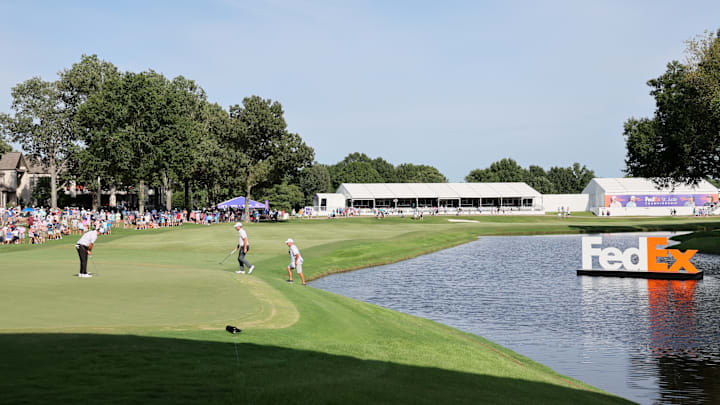TPC Southwind will once again play host to the FedEx St. Jude Championship, the first leg of the FedEx Cup Playoffs.
Despite its distinguished position on the PGA Tour Schedule, this Ron Prichard design leaves a lot to be desired. While there are a few exciting holes, the relentless flatness of the green complexes and uninspired, shallow bunkers give this Memphis layout the look and feel of a cheap municipal course dressed up as a championship venue.
That said, TPC Southwind has been a decent stage for this postseason event, providing numerous thrilling finishes on its handful of dramatic back-nine holes. Though it is monotonous in spots, the course also provides opportunities for drama and two quality finishing holes. It is a layout that features a good deal of mediocrity sprinkled with a few truly exciting holes. We will see whether those holes provide another tournament-defining moment this week.
Overall: 4.70 - TPC Southwind is a layout filled mostly with uninteresting, generic holes interspersed with a handful of memorable, anxiety-inducing gems.
To be blunt, many holes at TPC Southwind are easily forgotten.
Memorable Holes: 3.5
To be blunt, many holes at TPC Southwind are easily forgotten. Elevation changes are minimal, the bunkers are shallow and boring, and the contours around the green complexes are nothing to write home about. A few holes deviate from this truth. The 162-yard par-three 11th features an island green that mimics the famous 17th at TPC Sawgrass; the highly difficult par-four ninth doglegs sharply to the right with the green guarded closely by an intimidating pond; and water threatens the left side of the par-four 18th from start to finish. Beyond these examples, however, there are few holes that will make any kind of lasting impression on golfers.
Interest: 3.5
At the risk of being redundant, there aren't many must-see shots at TPC Southwind outside a few notable holes. There are very few significant contours around the greens, and the layout in general is quite flat. The result is an absence of high-stakes approach shots and a lack of shot variety around the greens. The interest comes at the handful of holes that require golfers to play over large water hazards. As listeners of my podcast (Linksworms) know, I contend that any golf course that depends on water as the one and only source of excitement and variety is not a high-quality golf course. TPC Southwind is a textbook example of this sort of profile.
Par Threes: 6.0
The par threes at TPC Southwind are solid and feature a fair amount of variety. The first comes at the 196-yard fourth, where water and a small pot bunker guard the boomerang-shaped green. The 171-yard eighth features a gorgeous plateau green with surrounding bunkers and runoff areas. The aforementioned 11th is a shortish island green with a pot bunker short and two additional bunkers just behind. Lastly, the 205-yard 14th is a very difficult hole presenting a narrow, angled green with water tight to the entire right side. None of these short holes will rank on lists of the world's greatest par threes, but they are interesting and difficult with each being distinctly different.
Difficulty: 5.0
TPC Southwind is not overly difficult, but it is not a cakewalk, either. As I've already belabored, the lack of significant elevation changes helps make things a bit easier. Many of the holes without water hazards do not present significant penalties for off-target shots, particularly on the approaches. The holes that do have water, however, are extremely difficult to birdie and stiffly penalize inaccurate shot-making. We will likely see some low scores here, but the challenge still deserves respect.
Finish: 5.5
The final three holes here at TPC Southwind are a mixed bag. The 530-yard par-five 16th is simply a waste of a hole; it's a short par five featuring no water hazards, elevation changes, or any other significant barriers of entry to the green to create interest and give the golfer pause. This will be an automatic birdie for most players in the field.
The following two holes, however, are great finishing par fours. The narrow 505-yard 17th is so unflinchingly straight that it may actually be uncomfortable for Tour players; the green is shaped like a kidney and is well guarded by bunkers. The 453-yard 18th is a classic finishing hole with water down the entire left side; with the tournament on the line, golfers will decide how much of the water to take on to hit a narrow fairway and set up a shorter approach. This high-stress closer always delivers drama at the FedEx St. Jude Championship.
For the criteria used to determine these ratings, please click here.
